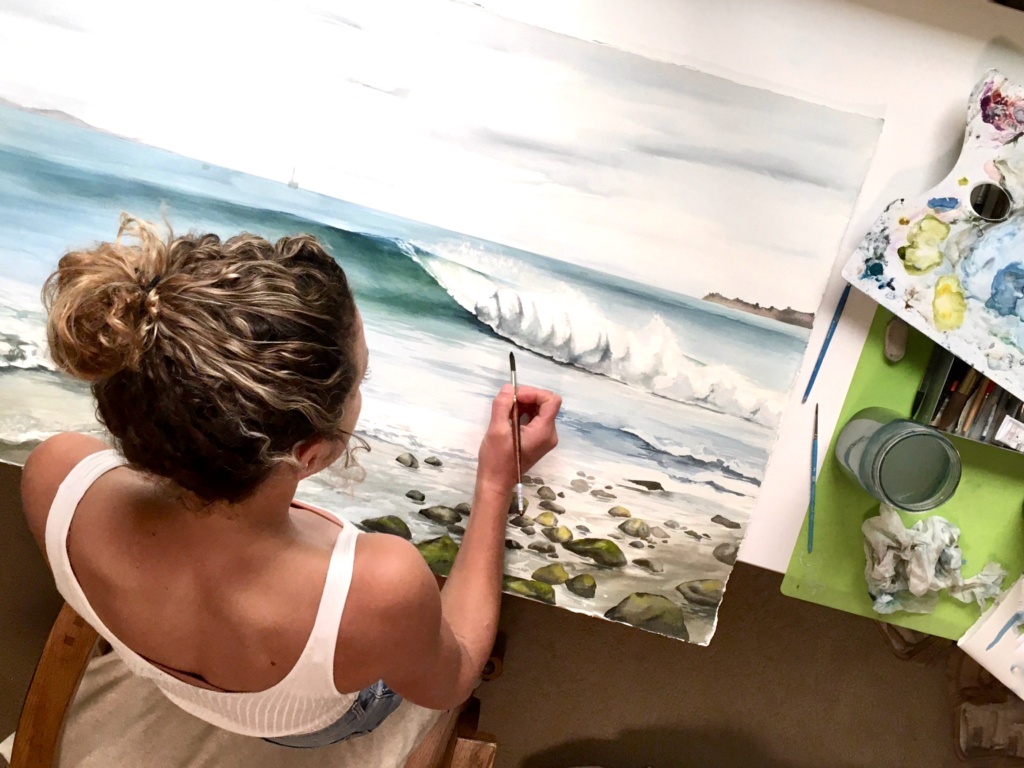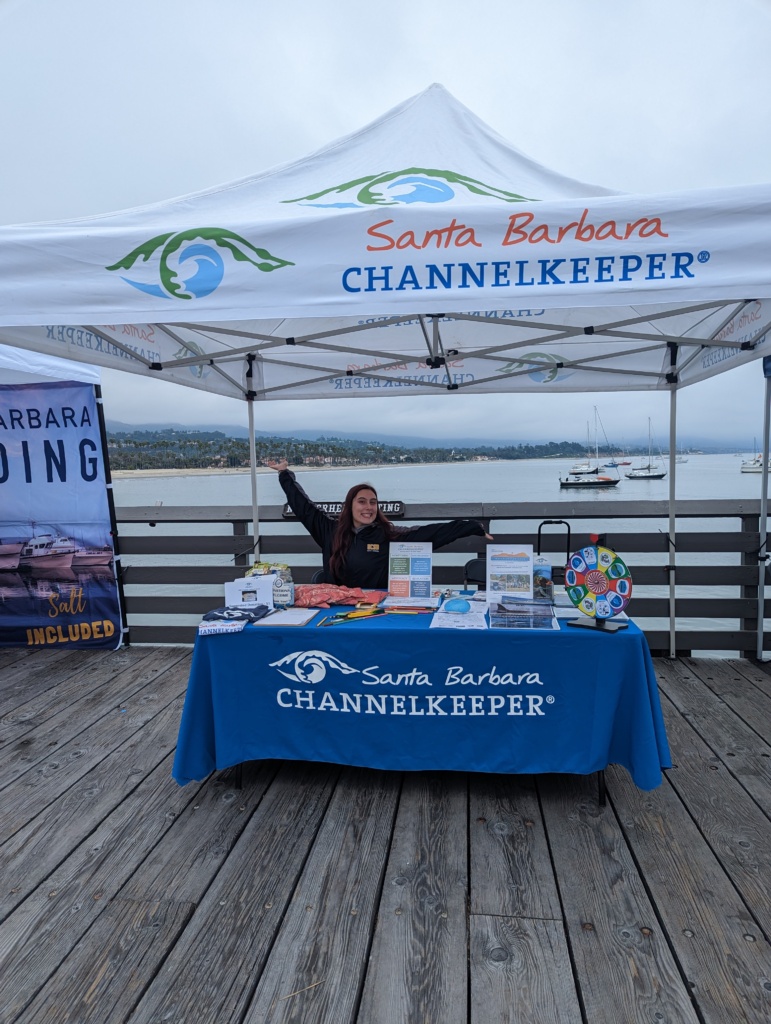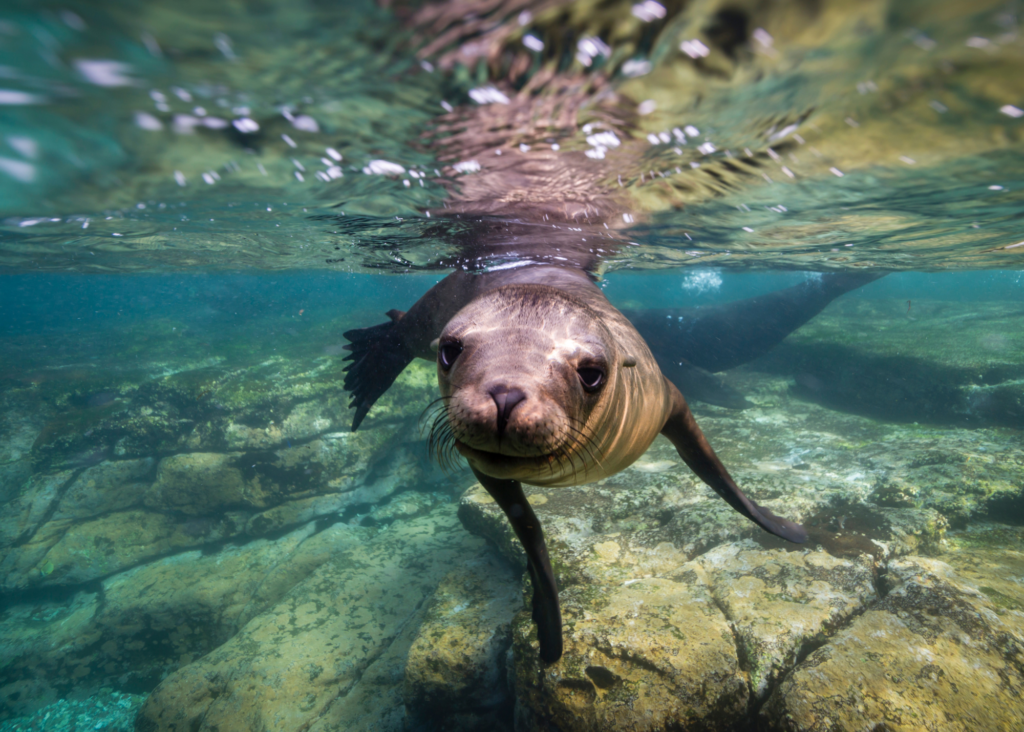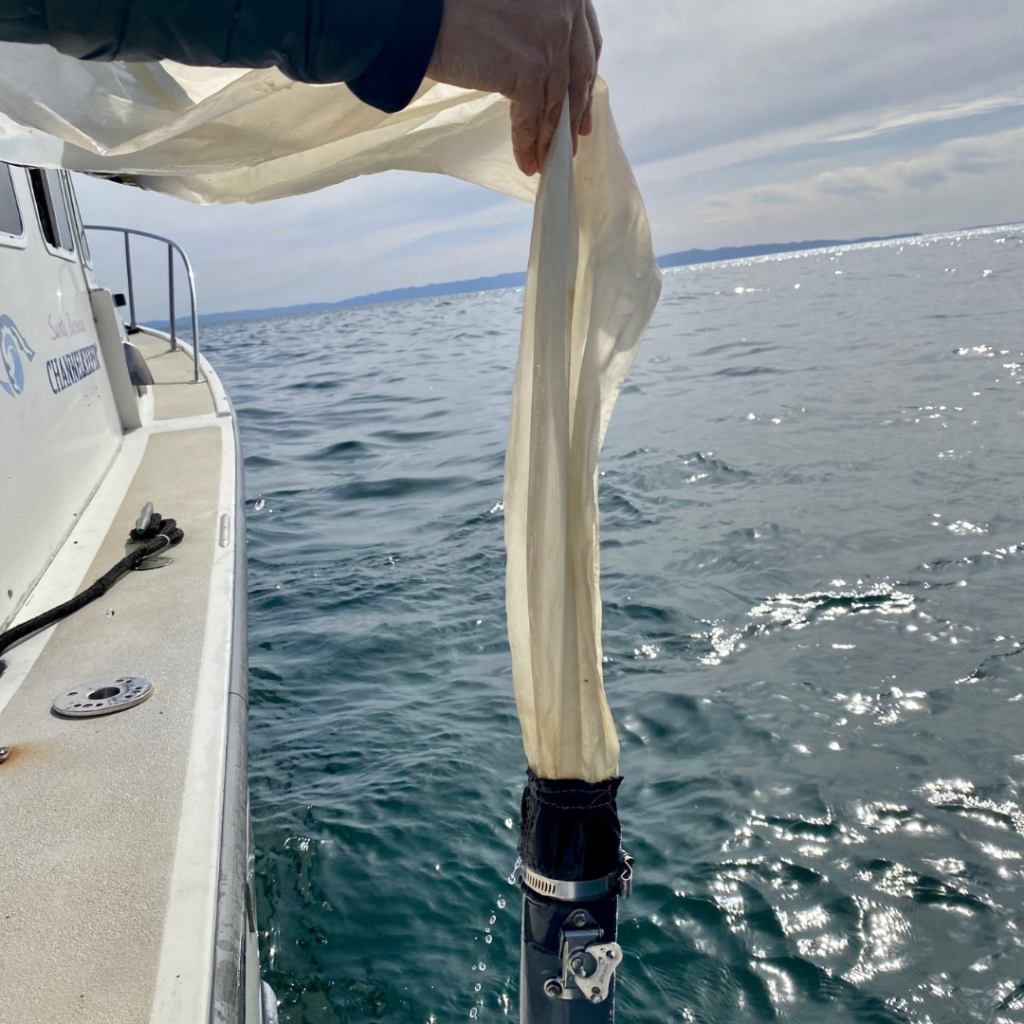An interview with this year’s Student Art Show Juror, Kelly Clause
Every spring for the past twenty-one years, Channelkeeper’s Student Art Show has celebrated the connection between young people and the ocean. High school students from Carpinteria to Goleta are invited to create their interpretations of what the Santa Barbara Channel means to them. The artwork they produce is expressive, personal, and powerful.
Inspiring the next generation of environmental leaders is one of the show’s fundamental goals. This year, we’re thrilled to welcome artist Kelly Clause, who participated in Channelkeeper’s Student Art Show in 2005, as a high school student, as the show’s juror.

Kelly’s artwork is influenced by the ocean and its inhabitants, as well as the unique beauty of the California coast. She believes that connecting young people to the ocean through experiences like the Student Art Show helps plant the seeds of environmental stewardship—a connection with nature that can be nourished over time and can inspire a life-long sense of environmental responsibility and care.
In the interview that follows, Kelly shares her profound, personal connection to the ocean as well as her experience as a young participant in Channelkeeper’s Student Art Show and the positive impact that it had on her as an artist.
Channelkeeper (SBCK): As an artist, what draws you to paint the ocean and its creatures?
Kelly Clause (KC): The ocean and its creatures are the object of my never-ending curiosity, awe, and respect. The ocean is full of life, full of mystery, and will humble even the most confident of human beings. It feels so natural for me to paint the ocean because I was raised near it, in it, and with this constant hunger to understand it more. I love to surf, dive, paddle, and generally just spend time near the water. I feel really lucky to have been raised here in Santa Barbara and want to do my best to protect the unique beauty of our coast! I believe art has the potential to impact people to pause, appreciate, grow curious, and ultimately become better stewards of our environment.

SBCK: What was your first experience with Channelkeeper’s Student Art Show?
KC: I believe it was my sophomore or junior year of high school at Dos Pueblos High School, and my art teacher asked if she could enter me into a local art show that was all about the ocean. Naturally, I said yes, painted a big wave in acrylic, turned it in, and was completely shocked when they announced I had won an award for it. I really had no idea what Channelkeeper was at the time, but I vividly remember the kindness and enthusiasm in that room.
SBCK: What was the Student Art Show experience like as a student?
KC: It was fun! It was my first ever experience being a part of an art show, and Channelkeeper did such a great job at making us students feel important and honored for showing our work. It was a positive experience for me, and increased my confidence and helped me take chances and enter other art shows down the road.
SBCK: Why do you think it’s important to highlight the artwork of young people?
KC: Young people not only have artistic talent that should be celebrated and seen, but by investing in youth, we are investing in our future community and environment. Art can be a powerful voice to spark curiosity, prompt questions, increase emotional literacy, and promote beautiful causes. Encouraging young people to be vulnerable in expressing themselves through art as a means of communication is a worthy investment
SBCK: As you know, the theme of the show each year is “What the Channel Means to Me.” If you were going to create one piece of art that evoked what the Channel means to you, what would you create?

KC: It’s difficult to sum up what the Channel means to me in one piece of art, but I guess that’s the beauty of art. You don’t have to say it all! At this point in time, I would probably paint Giant kelp, because of its beauty and the unique ecosystem it creates in our Channel.
SBCK: Do you have a favorite ocean creature to represent in your artwork? Why?
KC: Humpbacks! To me, whales are completely majestic creatures. Their size alone is absolutely awe-inspiring and will make you feel humbled in a second if you are fortunate enough to get close to one. Their devotion to escorting their young thousands of miles home to safety, their acrobatic skills and playful nature, their singing, gentle but fierce demeanor…whales are incredible to me. My first watercolor was a whale, and it inspired the entire direction of my artistic journey.
The community is invited to join us in celebrating the artists at a reception on Thursday, May 2nd from 5:00 pm to 8:00 pm that will take place at the Jodi House Gallery at 625 Chapala Street in Santa Barbara. Click here for more information.
The show is sponsored by Trillium Enterprise, Inc. and the City of Goleta Grant Program.




